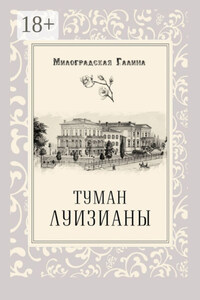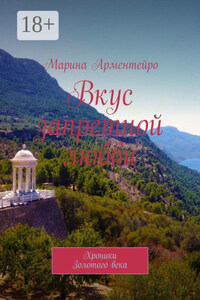A Year of War, 1944–1945
JAMES HOLLAND
For Daisy
By the spring of 1944, the vast reach of Hitler’s Third Reich, chieved so spectacularly in the early part of the war, was diminishing. In the East, the Soviet Red Army was clawing back land lost and was about to regain the Crimea, while in the West, the Western Allies were poised to invade France. Already the Axis powers had lost North Africa and, the previous summer, Sicily. Mussolini, the Fascist dictator of Italy, had been deposed, and on 8 September 1943, the Italians surrendered to the Allies. With British troops already on the southern toe of the peninsula, the main Allied invasion force landed at Salerno, south of Naples, the morning after the Italian armistice. Thus began a long and bloody campaign that would cause untold suffering. Seven months of fighting, mostly in the intractable terrain around the town of Cassino, would wreak appalling destruction.
By May 1944, with the Italian winter behind them, the Allies were ready to renew their drive towards Rome. As the battle rolled north, the rest of Italy would become consumed by the campaign raging up its narrow leg. That year, from May 1944 to the war’s end almost exactly twelve months later, would be one of the most terrible in Italy’s history.
List of Maps
Note on the Text
Principal Personalities
Prologue
Part I: The Road To Rome
1 The Eve of Battle: May 1944
2 Battle Begins: 11–12 May 1944
3 Churchill’s Opportunism
4 The Slow Retreat
5 Frustrations
6 Between the Devil and the Deep Blue Sea
7 Masters of the Skies
8 The Battle Rages: 13–16 May 1944
9 New Order
10 Breaking the Gustav Line: 17–18 May 1944
11 Achtung Banditen!
12 The Fog of War: 18–23 May 1944
13 Break-out: 23–26 May 1944
14 General Clark and the Big Switch: 26–30 May 1944
15 The Fall of Rome: 1–5 June 1944
Part II: The Brutal Summer
16 The North
17 The Problems of Generalship: June 1944
18 The Typhoon Rolls North
19 Breaking the Albert Line: 20–30 June 1944
20 The Politics of War
21 Differences of Opinion
22 Summer Heat: July 1944
23 Crossing the Arno: July–August 1944
24 A Change of Plan: August 1944
25 Despair: August 1944
26 The Gothic Line: 25 August–1 September 1944
27 The Tragedy of Gemmano: 1–12 September 1944
28 Mountain Passes and Bloody Ridges: 12–21 September 1944
Part III: The Winter of Discontent
29 Death in the Mountains: 22–29 September 1944
30 The Reason Why
31 Rain, Mud and Misery, Part I: 1–14 October 1944
32 Rain, Mud and Misery, Part II: 15–31 October 1944
33 The Infantryman’s Lot: November 1944
34 The Partisan Crisis: November–December 1944
35 White Christmas: December 1944
Part IV: Endgame
36 Stalemate: January–February 1945
37 Getting Ready: February–April 1945
38 The Last Offensive: 9–20 April 1945
39 The End of the War in Italy: 21 April–2 May 1945
Postscript
References
Bibliography
Acknowledgements
Abbreviations and Glossary
Guide to ranks
Index
Copyright
About The Publisher
Italy showing German defensive lines
Cassino front, 11 May 1944, and Alexander’s battle plan for DIADEM and the destruction of AOK 10 south of Rome
The Monte Sole massif
Operational zone of the 8th Garibaldi Brigade of Partisans, also showing the river network Eighth Army had to cross, September 1944 to April 1945
The Val d’Orcia
Northern Italy, Lake Como and Lake Garda
Main Italian rail network and ports
Allied Control Commission Organisation of Italy, 1 September 1944
The Winter Line, January 1945
DIADEM: The battle for Rome and German lines of retreat for AOK 10
The Allied pursuit from Rome to the Albert Line, 5–20 June 1944
From the Albert Line to the River Arno, July and early August 1944
Alexander’s battle plan for the Gothic Line, August 1944
Eighth Army’s attack on the Gothic Line, August to September 1944
Fifth Army’s assault on the Gothic Line, 10–18 September 1944
The German attack on Monte Sole
Fifth Army’s attempt to break through the Apennines, 1–15 October 1944
The final offensive, April to May 1945
Italy showing German defensive lines
Cassino front, 11 May 1944, and Alexander’s battle plan for DIADEM and the destruction of AOK 10 south of Rome
The Monte Sole massif
Operational zone of the 8th Garibaldi Brigade of Partisans, also showing the river network Eighth Army had to cross (Sept. 1944–April 1945)
The Val d’Orcia
Northern Italy, Lake Como and Lake Garda
Main Italian rail network and ports
Allied Control Commission Organisation of Italy, 1 Sept. 1944
The Winter Line, January 1945
One of the difficulties faced when writing about different armies of different nationalities is that many units have similar names. Furthermore, many American servicemen also have Germanic-sounding names. So in an effort to avoid any confusion, I have used the German spellings for the names of military units and ranks. For example, the German name for an army was Armeeoberkommando, or AOK as it was known; paratroopers were called Fallschirmjäger; armoured divisions were called panzer divisions. I have also included as an appendix to the book a comparison of military ranks.
On the other hand, I have translated Italian ranks, but have kept certain Italian words in their true form where there is no appropriate translation, such as








